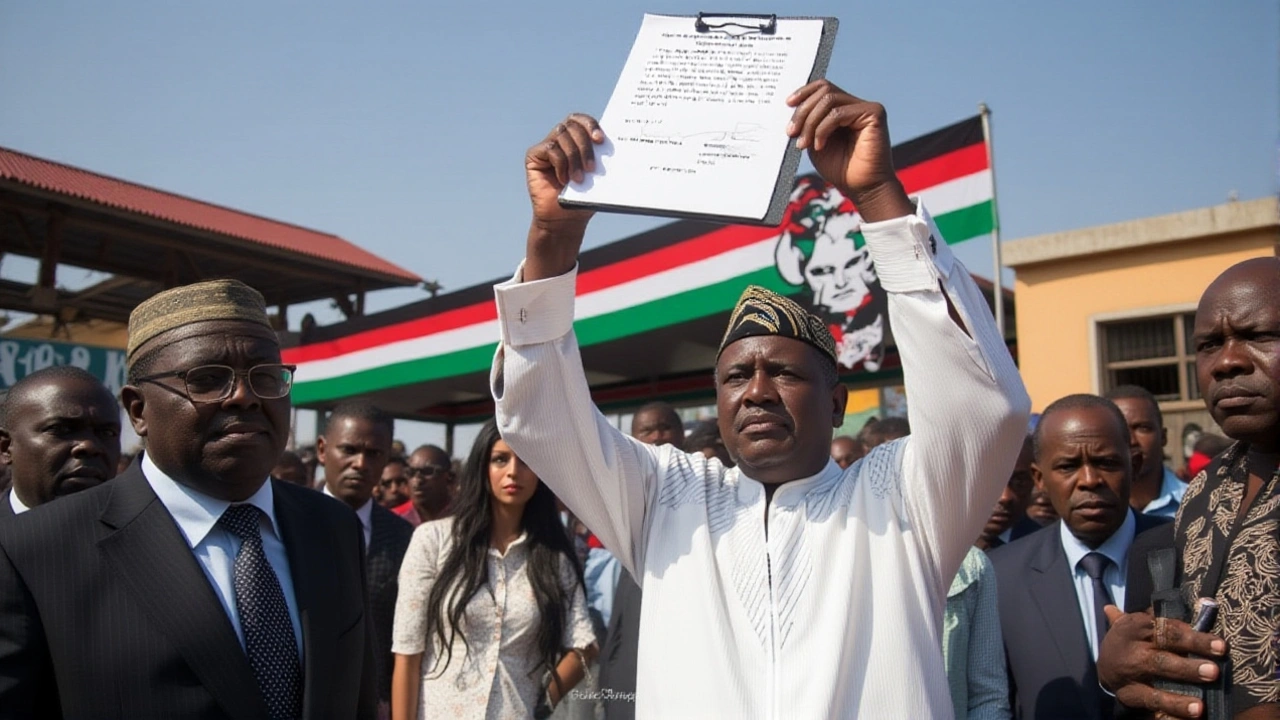Broadcast Blackout – What It Means for Fans
When you hear the term broadcast blackout, a temporary restriction that stops a live TV or streaming feed from reaching a specific area, also called a signal blackout, you might wonder why your favorite match disappears from the screen. The short answer: broadcasters and leagues negotiate TV rights, the legal agreements that let a network show a game in exchange for money. Those contracts often include geographic clauses that create blackout zones, especially when a local stadium ticket sale is at stake. In practice, the blackout rule forces fans in a certain city or region to watch the game elsewhere—usually on a paid streaming platform or in a sports bar. The idea is to protect ticket sales and keep the live‑attendance numbers healthy.
Another key player in the blackout puzzle is the streaming platform, any digital service that delivers video over the internet, like ESPN+, Fancode, or YouTube. When a league signs a deal with a streaming partner, that partner inherits the same geographic restrictions baked into the TV‑rights contract. That means a platform might show a football match in Kenya but block it for users in South Africa until the game is over. This is why you sometimes see a “Live elsewhere” notice on your app. The rule also protects local broadcasters who have paid for exclusive rights within their territory. It’s a delicate balance between rewarding big‑ticket buyers and satisfying the binge‑watching crowd.
Regional licensing is the third piece of the puzzle. Each country—or even each city—can have its own licensing agreement, which is why a Premier League clash can be free on a national channel in Nigeria but completely unavailable on the same channel in Namibia. Licensing bodies, like the FCC in the US or the ICASA in South Africa, enforce these agreements to avoid market overlap. When a blackout hits, fans often turn to social media for workarounds, but that’s where misinformation spreads quickly. Remember the viral claim that a “broadcast blackout” meant an entire league was shutting down? It was just a routine licensing update for a new season. Understanding the real reasons—rights, platforms, and licensing—helps you separate hype from policy.
How Blackouts Show Up in Real‑World Events
Sports fans are the most familiar with blackout rules because leagues like the NFL, Premier League, and NBA use them regularly. In August 2025, the NFL’s first exclusive live broadcast from São Paulo featured a massive pop‑up concert, yet fans outside the host city saw a blackout on local TV while the feed streamed globally on YouTube. That scenario highlighted two things: the power of a streaming platform to bypass traditional TV blocks and the importance of regional licensing that kept the local market’s ad revenue intact.
In the world of soccer, a March 2025 World Cup qualifier between Guinea and Uganda saw a temporary blackout in Kampala because the stadium’s ticket sales hadn’t met a minimum threshold. The match was still available on a regional sports network, but the live TV signal was turned off for the city’s cable subscribers. That blackout spurred a wave of social media chatter, showing how fans quickly adapt—some fled to nearby bars, others switched to a paid mobile stream. It’s a classic example of how TV rights and local ticket policies intersect.
Even non‑sport events aren’t immune. When Karol G headlined YouTube’s first exclusive NFL halftime show in São Paulo, the broadcast was free worldwide, yet a few African countries experienced a brief blackout due to a delayed licensing rollout. The incident reminded us that every new digital partnership comes with a learning curve for regional regulators.
Behind each blackout is a clear set of attributes: the entity (broadcast blackout), the cause (TV rights contracts, streaming platform agreements, regional licensing), and the effect (restricted live viewership, increased ticket sales, or forced migration to alternative platforms). Those three parts form a simple semantic triple—"Broadcast blackout requires TV rights," "Streaming platforms enforce regional licensing," and "Regional licensing influences live sports viewership." By keeping these connections in mind, you can predict when a blackout might happen and plan accordingly.
Knowing the mechanics also helps you spot legitimate alternatives. For example, South Africa’s Eskom partnership with BYD includes a fleet of electric vehicles equipped with mobile 5G hotspots—an unexpected but real way to stream around a blackout when you’re on the road. While not a permanent fix, it shows how technology can soften the impact of licensing rules.
So, what should you do when a blackout hits? First, check if your streaming service offers a “watch elsewhere” option. Second, look for local sports bars that have the right broadcast rights—many venues pay for the exclusive feed. Third, keep an eye on official league announcements; they often release blackout maps a week in advance. By staying informed, you can turn a frustrating moment into a chance to explore new ways to enjoy the game.
Below you’ll find a curated list of recent stories that illustrate how broadcast blackouts shape everything from football qualifiers to tennis masters, from tech launches to electric‑vehicle rollouts. Each article shows a different angle—whether it’s a legal dispute, a streaming breakthrough, or a fan‑driven response. Dive in to see real‑world examples, learn the patterns, and get a better sense of how the rules affect you today.
Kenyan Govt’s TV Blackout Over Raila Odinga’s Swearing-In Sparks Court Clash
Kenyan officials shut down three major TV stations during Raila Odinga's swearing‑in, prompting a High Court order to restore broadcasts. The ten‑day blackout raised fresh concerns over press freedom.
